The 13 Best Curling Irons of All Time, Reviewed by 'Marie Claire' Editors
These are easy to use, add shine, and actually hold.
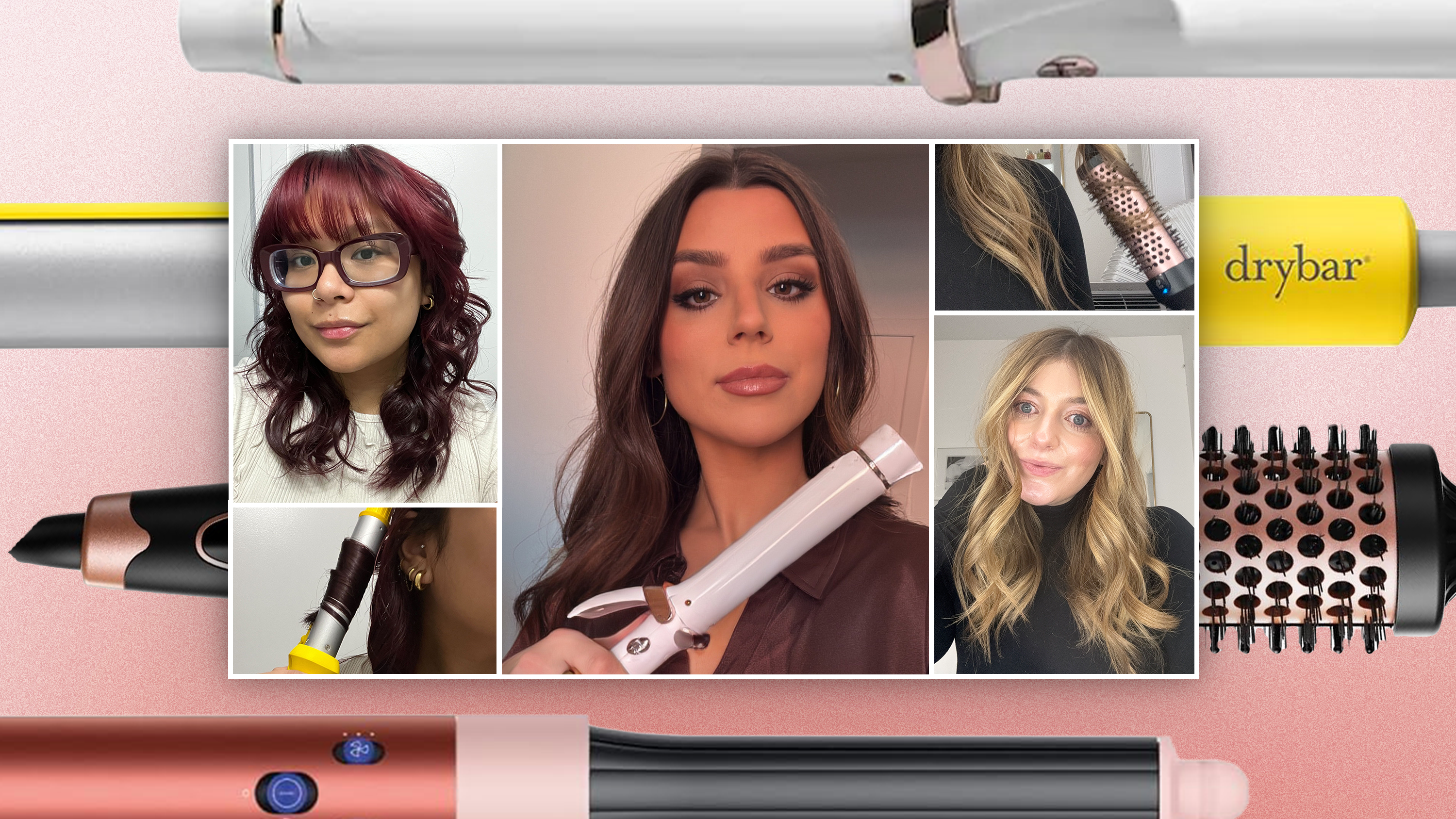

Having a well-rounded hot tool arsenal is the key to consistent good hair days. The best blow dryers will help prevent frizz and the best straightening irons can add shine and smoothness. But hands down, without a doubt, the best curling irons make for the most versatile hair styling tools. Whether you’re after beachy waves, a spiral, or just looking to add some definition after you air-dry your hair, there is a barrel, a heat range, and a technique that will get the job done.
Curling irons, wands, and wavers work with every hair type under the sun and you really only need one solid option (okay, maybe two) in your arsenal. Lucky for you, hair pros Harry Josh, Clariss Rubenstein, and Rogerio Cavalcante have decided to share their insider advice on what to look for when selecting the best option.
It doesn’t matter if you have fine hair that you *believe* won’t hold a curl or are dealing with curly hair that is in need of some extra shaping—there's a hot tool that will work with your specific hair type and texture. Trust us: The Marie Claire team has spent the past few weeks testing curling irons to discover the best, evaluating ease of use, versatility, hair health benefits, and durability of the curl. Our honest reviews, ahead.
The Best Curling Irons
- Best Curling Iron Overall: T3 Single Pass 1.25 Inch Curling Iron
- Best Curling Iron for Long Hair: Dyson Airwrap Multi-Styler Complete Long
- Best Curling Iron for Thick Hair: Drybar The Mixologist Interchangeable Curling Iron
- Best Curling Iron for Curly Hair: Pattern The 3-in-1 Interchangeable Curling Iron
- Best Curling Iron for Shine: GHD Soft Curl Curling Iron
- Best Curling Iron Without a Clamp: IonLuxe Dual Voltage Cordless Curling Iron
- Best Heated Brush Curling Iron: WavyTalk Thermal Brush
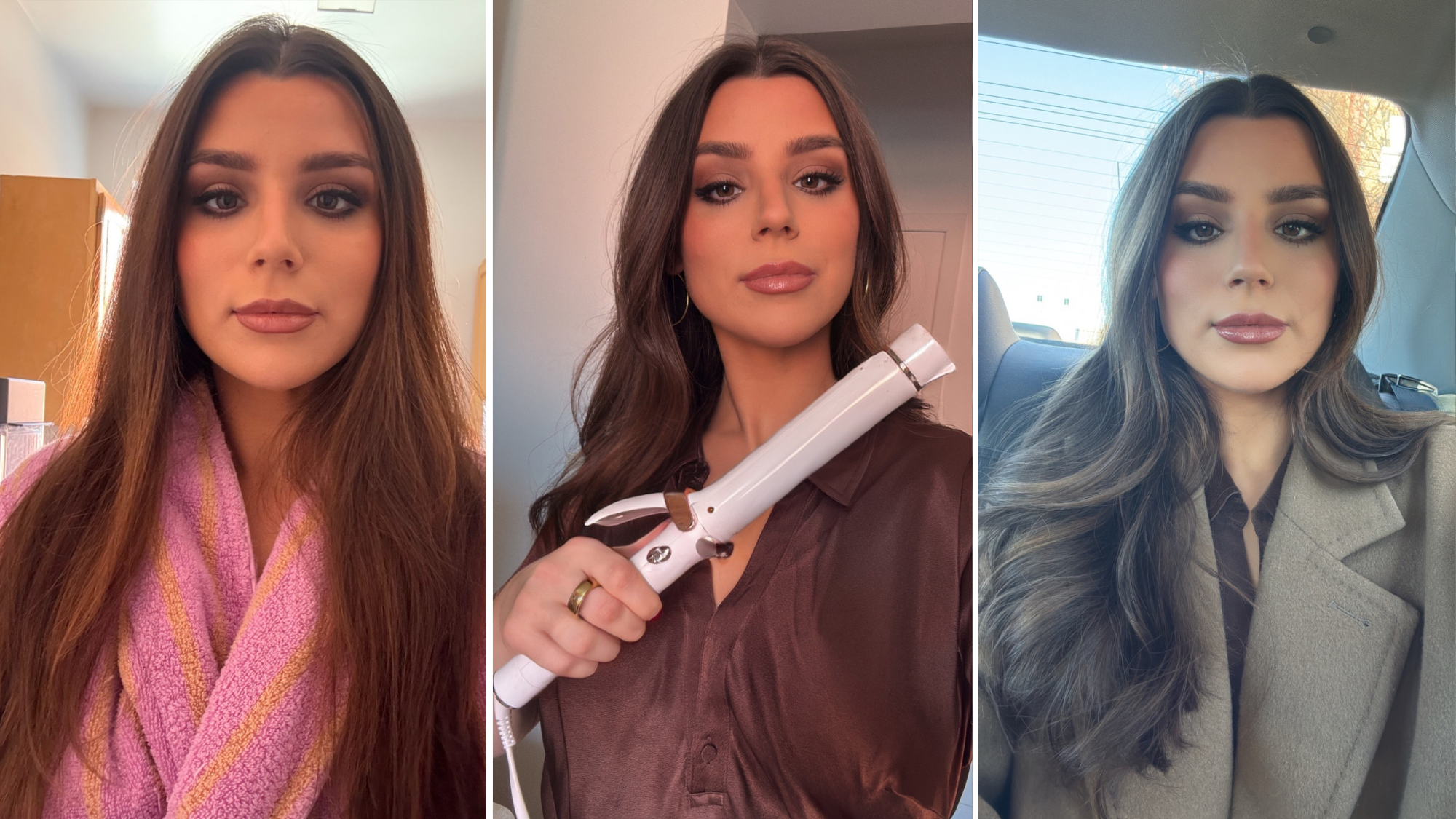
With nine different heat settings ranging from 260 to 510 degrees, this curling iron allows you to pick the best temperature for your hair type and texture. That way, you’ll be able to achieve a long-lasting curl—in just one pass—without frying your ends. The brand’s ceramic composition also helps prevent tugging and pulling; your hair will glide gently through the clamp, resulting in a smooth, shiny curl. Plus, the barrel is extra long (14.5 inches), making this long hair-friendly.
What We Love: Auto shut off after an hour; under $150; nine heat settings depending on your hair type
What We Don’t: The clamp sometimes catches hair and causes accidental breakage
Material: Ceramic
Temperature Range: 260 to 510
Barrel Size: 1.25 inch
Who It’s Good For: While this is technically good for all types of hair thanks to the nine different heat settings (fine hair should use one to four, medium hair should use five to six, and coarse hair should use seven to nine), the barrel is a bit too slippery for super fine hair.
Our Review: “I’ve been on the hunt for a quality curling iron for quite some time now, so I was beyond excited to get my hands on the T3 SinglePass Curl Curling Iron. Prior to getting started with the styling process, I washed, blow-dried, and straightened my hair (for context, I have curly hair, so prepping my hair beforehand was an absolute must). Since I often try to avoid overheating my strands, I adjusted the temperature to the medium heat setting (350°F-370°F). I parted my hair and rolled the iron upwards toward my scalp, doing so section by section. The iron was super lightweight and easy to maneuver, which made styling a breeze. To my surprise, I only needed to run the tool through my hair once! I was able to achieve a defined and voluminous look within minutes. My only critique is that the curls didn’t last for as long as I had anticipated. That said, I probably should have used a higher heat setting to ensure a long-lasting hold.” — Lauren Tappan, Fashion Editor

Lauren Tappan used the T3 SinglePass Curling Iron on the medium heat setting.
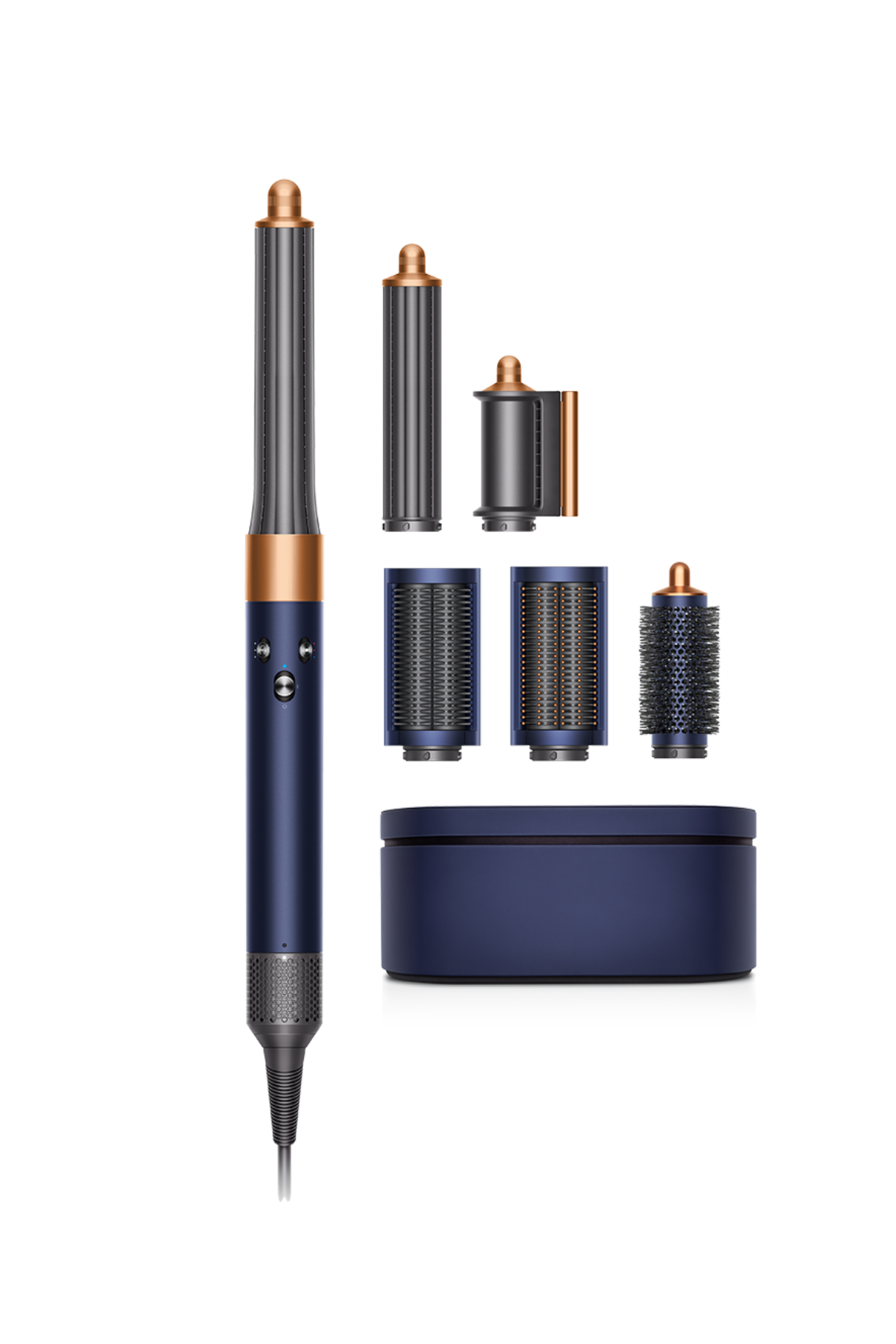
The AirWrap is shockingly in stock at the moment (can’t promise how long that’ll last), so don’t miss your chance to get the cult-favorite item. It comes with a handful of attachments that can do everything from rough-dry sopping wet hair and tame flyaways to provide a sleek, smooth finish. The star of the show, though, is the curling barrel, which uses controlled airflow to create voluminous, bouncy curls. There’s no technique necessary; just hold the barrel up to a strand of hair and let the Airwrap do the rest. For more info, check out my full review of the AirWrap Multi-Styler.
What We Love: Incredibly versatile thanks to six attachments; variations of the tool for straight/wavy and curly/coily hair with attachments suited to specific hair types; well-made and long-lasting tool
What We Don’t: It's very expensive, and because of the wattage, you can’t use it internationally
Material: Ceramic and steel with boar bristle and nylon brushes
Temperature Range: 140 to 302
Barrel Size: 1.2 inch or 1.6 inch
Who It’s Good For: The Dyson Airwrap works for all hair types, but you will have better results if you select the tool that works best for you. There’s a straight-to-wavy version with smoothing brush attachments and a curly-to-coily version with a larger round brush, a diffuser, and a wide-tooth comb.
Just a note: Those with thicker, coily, or curly hair may find Dyson’s results fleeting due to the low heat.
Our Review: “My hair styling predating the Dyson required a blow dryer, a round brush, a straightening iron (can’t have frizz!), and a curling iron. This single tool does everything at once. I typically rough dry my hair with the Coanda smoothing dryer and then add volume with the round brush attachment. Sometimes, I’ll stop there; the round volumizing brush can create a soft curl and bouncy blowout. But when I want a more intense curl, the Airwrap 1.2 inch long barrel is my savior. I can curl my whole head in under five minutes. I just pick up chunks of my hair, let the tool spiral my hair, hold everything for 10 seconds, and release. It looks a bit crazy before I run my fingers through it. But once I work in some hair oil, I’m left with a blowout reminiscent of a ‘90s supermodel.” — Samantha Holender, Beauty Editor
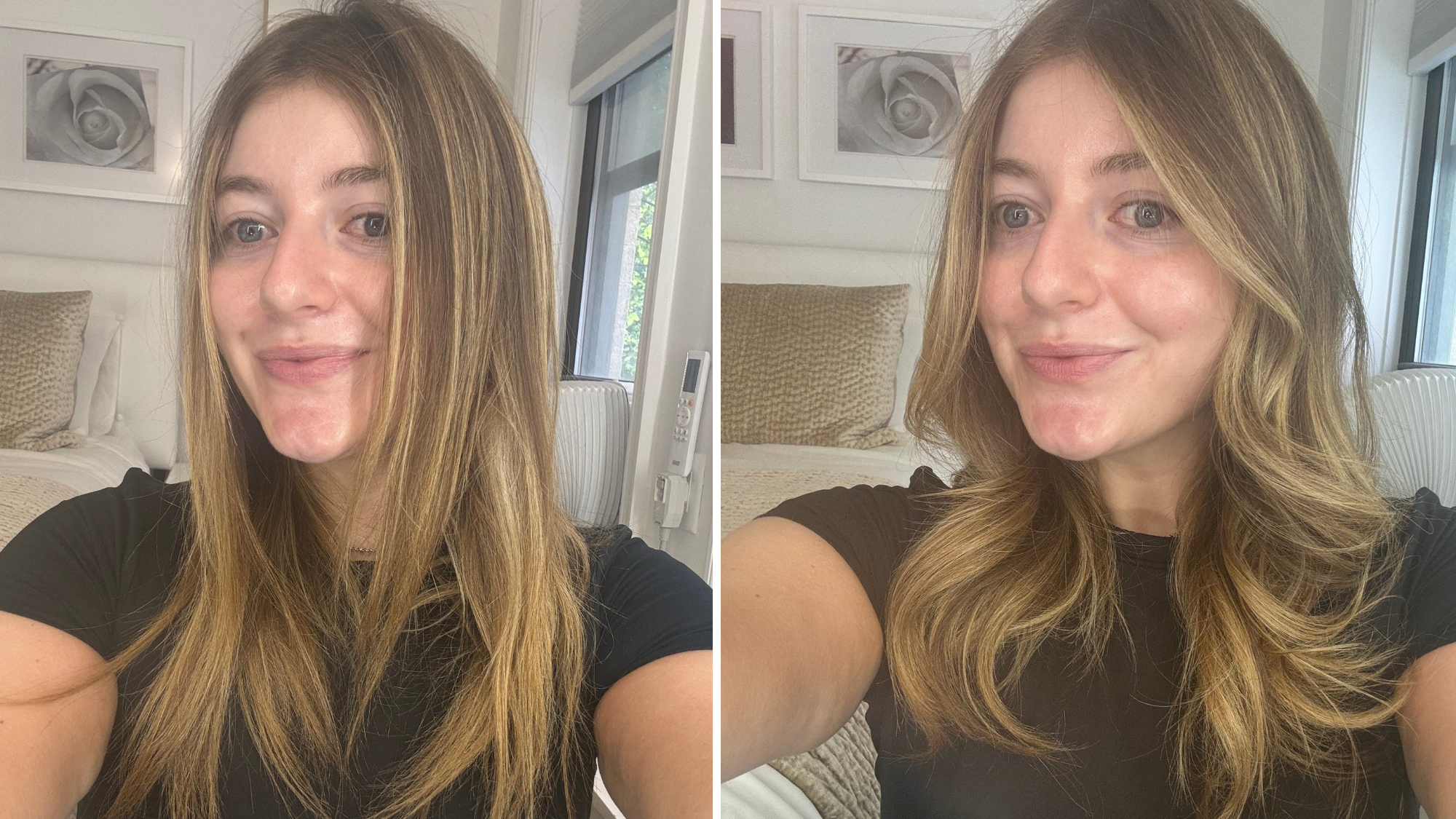
Samantha Holender before using the Dyson (on the left) and an hour after letting curls fall (on the right).
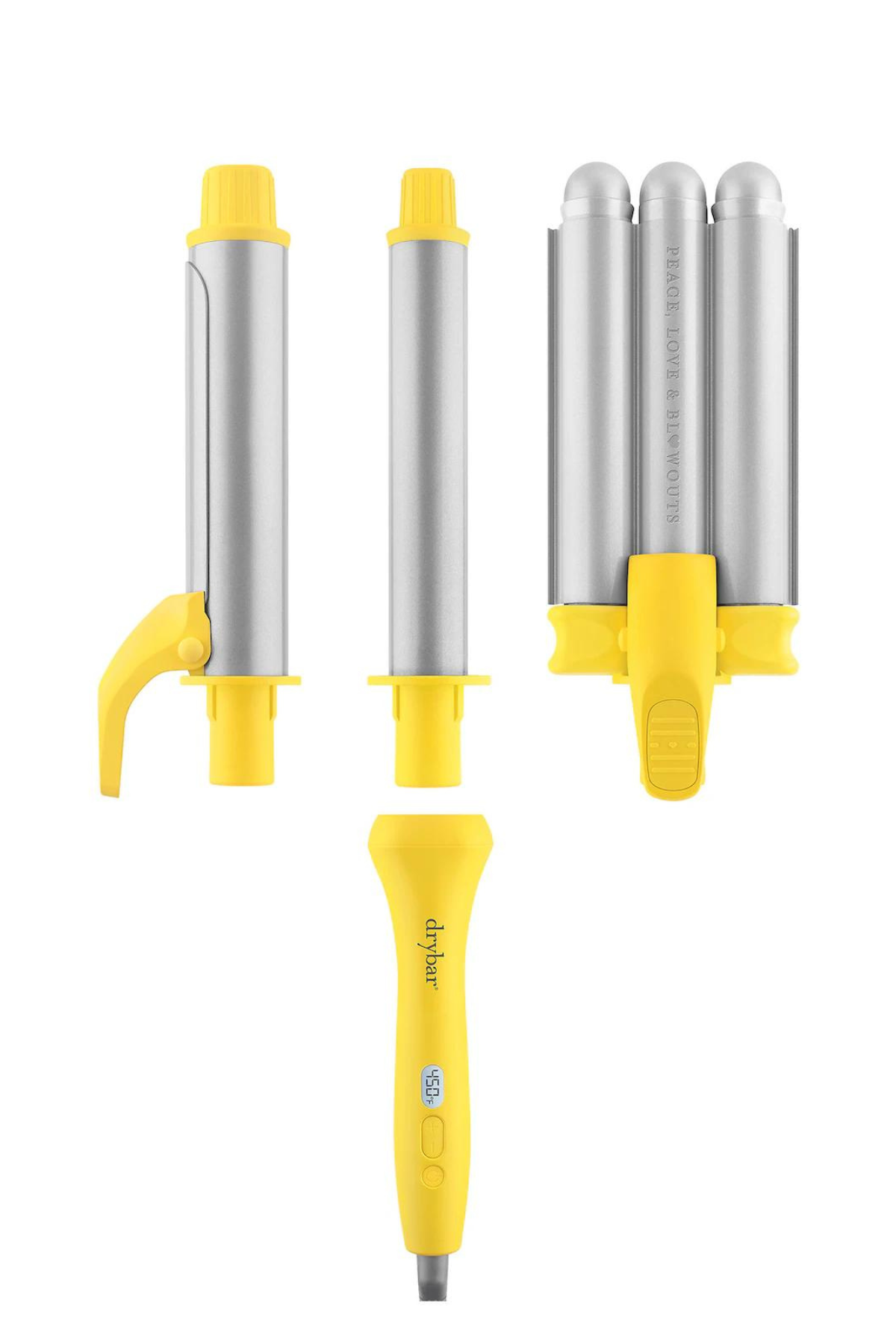
Sure, this might be expensive, but trust me: It’s worth every penny. The tool is basically three tools in one. The bottom component stays steady, but you can swap the top attachment for a curling iron with a clamp, a curling wand, or a three-barrel crimper. So this multi-purpose device has you covered whether you’re after a polished curl, a beachy wave, or a subtle bend from the waver. And, it comes in a cute travel case for easy storage.
What We Love: Three tools in one; one-hour safety shut off; two-year warranty; good for a variety of skill levels thanks to the inclusion of a wand attachment
What We Don’t: There’s no prop stand on this so it can burn your counter if you don’t put something like a towel down at your work station
Material: Ceramic
Temperature Range: Up to 450
Barrel Size: 1 inch wand; 1.5 inch curling rod; 0.75 inch waver
Who It’s Good For: This tool works on all hair types and textures. It’s particularly good for thick hair that requires more heat to hold onto a curl. You’ll also have success with this regardless of skill level.
Our Review: “I haven't strayed away from using my flat iron to curl my hair for years. And I don't love having to have multiple hair tools. The Mixologist changes the game for me. I like having multiple attachments that stay in a compact carrying case. It was also great to have options on ways I can curl/wave my hair. It's easy to use and a seamless process to take the wands on and off.” — Jonelle Arfuong, Junior Visual Designer

Jonelle Arfuong uses the DryBar Mixologist with the 1-inch barrel attachment.
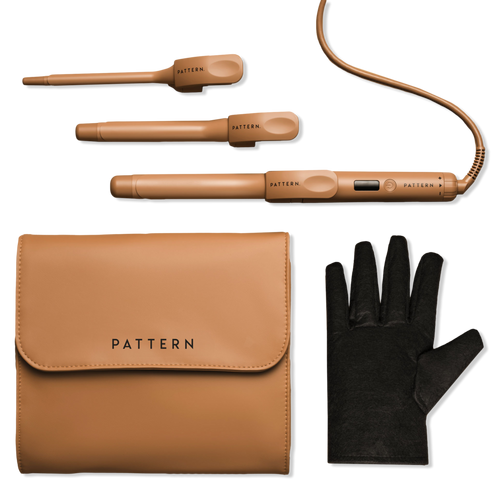
The brainchild of Trace Ellis Ross, Pattern’s 3-in-1 Interchangeable Curling Iron is designed to enhance and add more structure to natural curls. With three barrels, two of which are under one inch in diameter, this tool can easily create small curls, coils, or vintage waves. If you want even further customization, this hot tool has eight (!!) different heat settings, so can you boost or lower the temperature depending on your hair’s thickness and texture. Each barrel comprises a tourmaline-ceramic combo, which helps smooth the hair cuticle, boost shine, and provide a polished finish.
What We Love: Three interchangeable barrels means endless styling opportunities; 60-minute auto shut off; two-year warranty; heats up in just 30 seconds; eight customizable heat settings
What We Don’t: The temperature adjustment is very sensitive, so you’ll may accidentally swap your settings; the matte finish can be a little too grippy against hair
Material: Tourmaline
Temperature Range: 250 to 425
Barrel Size: 0.375-inch; 0.75-inch; 1-inch
Who It’s Good For: This tool works on all hair types and textures, but it’s ideal for hair that's curly or coily. It’s designed to enhance or polish natural curl patterns.
Our Review: “There’s a good reason why I waxed poetic about Tracee Ellis Ross’ latest hair invention on the TODAY show for the Marie Claire Hair Awards. For starters, it has three interchangeable ceramic barrel sizes—admittedly, I’m obsessed with the 3/8” barrel—that transforms my thin curls into big voluminous curls in four minutes. It also includes a swivel cord, so I don't need to distort my arms into weird shapes to get a decent curl. It's also lightweight—no arm breaking over here!” — Deena Campbell, Beauty Director
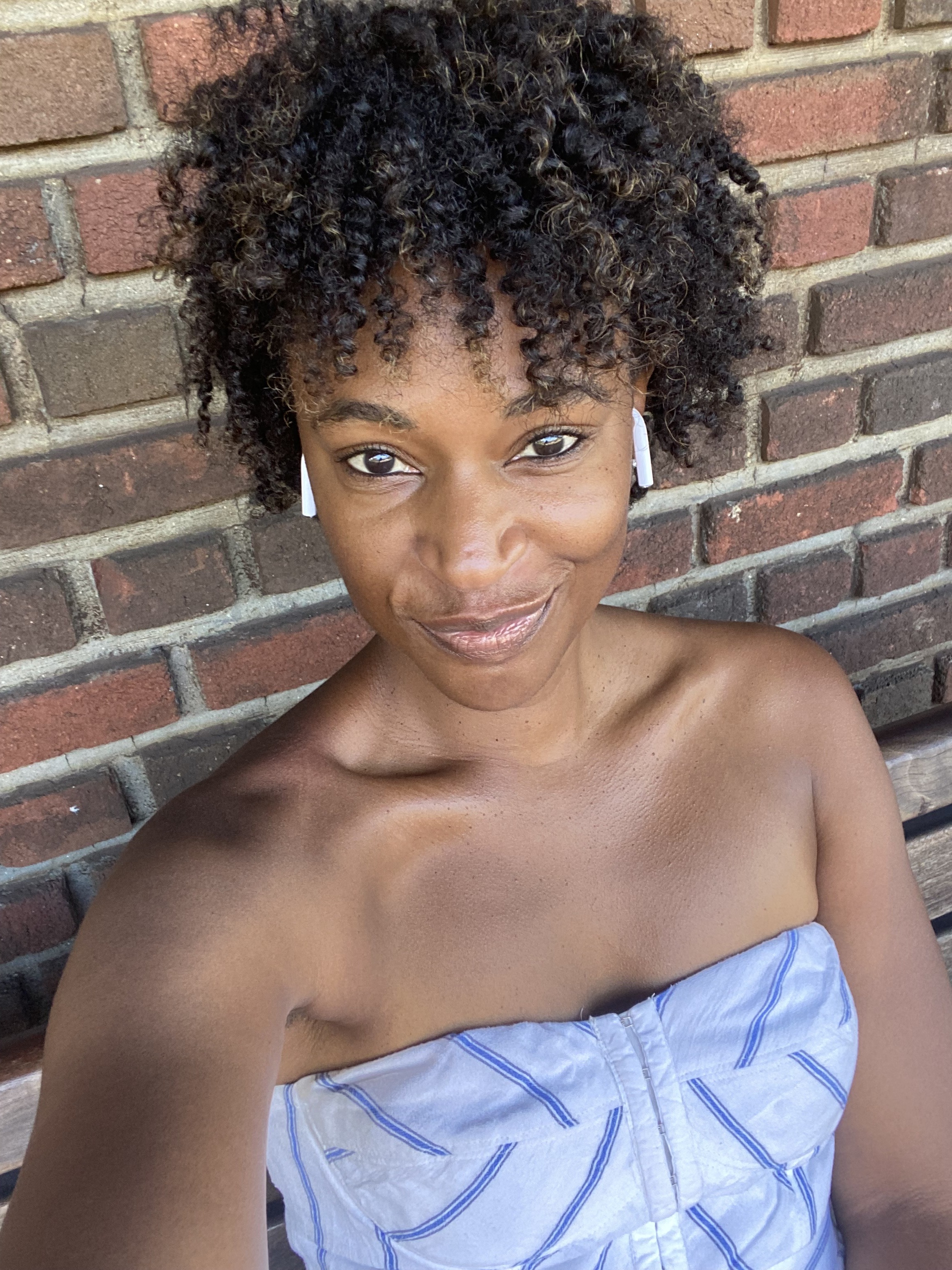
Deena Campbell loves that the Pattern Beauty curling iron enhances her natural curls.
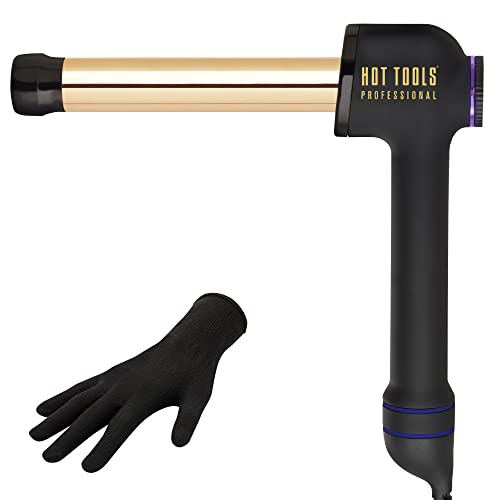
One of the most unique curling rods on the market, this Hot Tools device was crafted to be a horizontal rod. It might look a little funky at first, but the positioning actually takes all the guesswork out of curling. You’ll be left with traditional waves that weave together once brushed out. It’s also extremely comfortable to hold, making it a great option for anyone with upper back pain.
What We Love: Comfortable to hold and easy to use; versatile temperature settings; two hour auto shut off; you can preset how long you want to hold the tool to each piece of hair, so you’re left with uniform curls
What We Don’t: The temperature goes up to 450, which is too high for anyone; it’s a bit cumbersome to store
Material: 24K gold, which is known to fast, even heat and long lasting results
Temperature Range: Up to 450
Barrel Size: 1-inch
Who It’s Good For: This curling iron is great for two cohorts of people: Those who can’t maneuver a traditional curling iron and those with thick, coarse hair. While it works for all hair types, the fact that it does reach higher temperatures means that it will be able to style—and hold—coarser hair.
Our Review: “I’ll be honest, I wasn’t sure how to feel about the shape of this rod. But the second I turned it on, it was hard to deny the ease it provided. I achieved a uniform, old Hollywood style curl with ever single piece of hair. I decided to leave the ends out and brush through the curls before they totally cooled to get a beachier vibe. My best piece of advice is to really hold the bar as close to your scalp as possible if you want to boost volume. The photo below is at the end of the day, so these curls did last me over eight hours.” — Samantha Holender, Beauty Editor
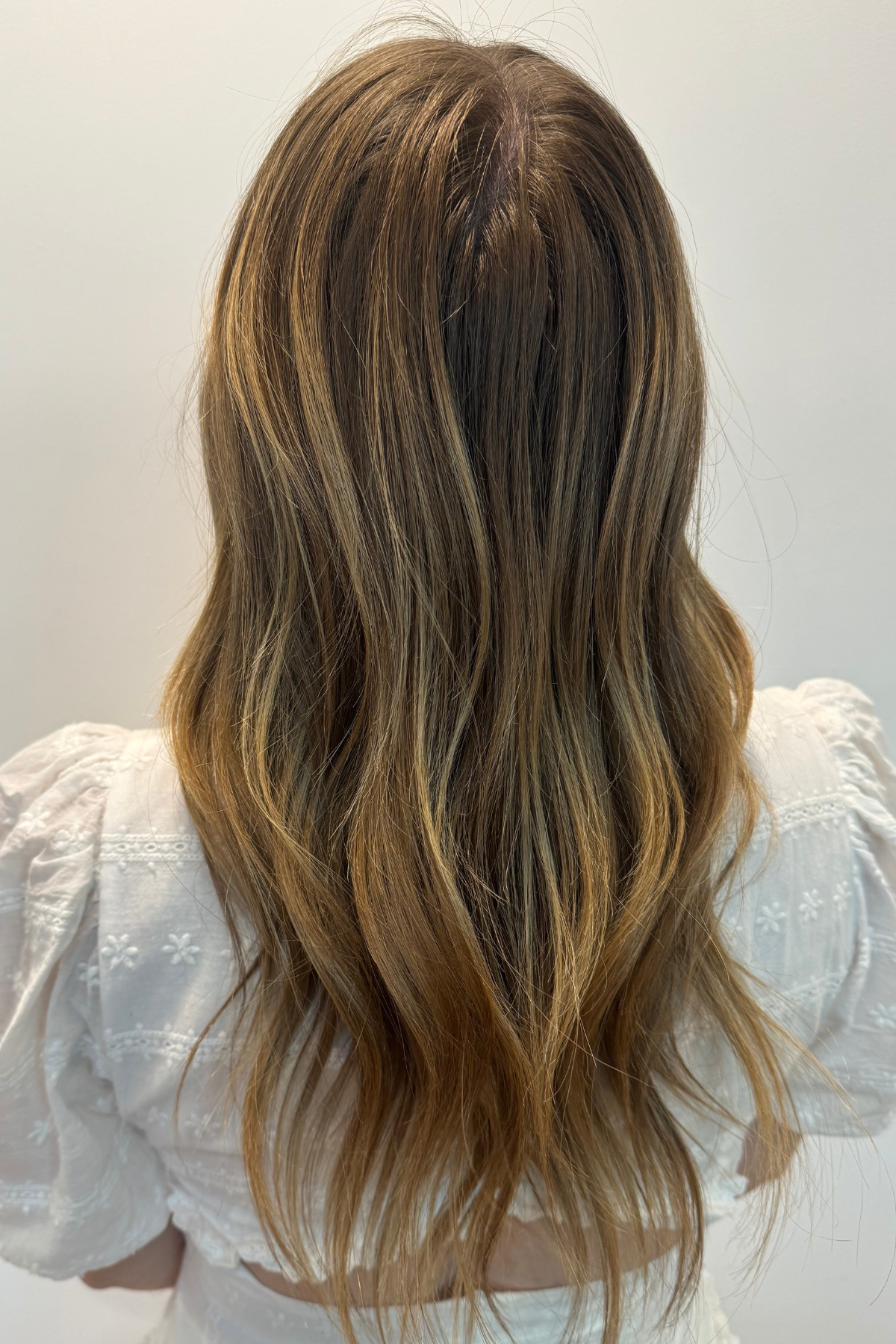
Samantha Holender shows how the Hot Tools curl held up, after a whole work day—and in NYC humidity.

If you’re chasing a shiny finish, GHD is the way to go. This particular curling iron uses something called ultra-zone technology, which essentially means that the iron monitors its heat output 250 times per second (!!) to ensure the temperature is even and optimized across every strand of hair. The result? Smooth, silky hair that has an added reflective quality. It’s auto-set to 365 degrees and should be held on your hair for five to eight seconds, depending on your hair type.
What We Love: It adds amazing shine; heats up very quickly; reviewers say this holds their curls better than anything else on the market; shuts off automatically in 30 minutes; has a safety stand for when the tool isn’t being used
What We Don’t: While 365 is a great temperature preset, this tool does not allow you to customize the temperature
Material: Ceramic
Temperature Range: 365
Barrel Size: 1.25-inch
Who It’s Good For: Regardless of your hair texture or thickness, this is a curling iron worth considering. The chunkier barrel might not be as ideal for shorter hair types. It’s also worth noting that people who struggle to hold a curl seem to have success with this curling iron.
Our Review: “A curling iron is a curling iron, right? WRONG! This curling iron is something altogether special. Heating up in literal seconds (it gives a nice little chime when it’s ready to rock), GHD’s Soft Curl was engineered to give your locks those lovely, luxe, and most of all soft (!) curls you’ve been dreaming of since your elementary school dance recital, when you watched the mom that really knew her way around a hot tool with awe. I’m as low maintenance as they come with my own hair, but something about throwing in a few ringlets with this tool doesn’t turn me off in the slightest. Maybe it’s the smooth hand feel? How quick it is? Honestly, I think it’s just ease altogether—and the fact that my locks look stellar.” — Sophia Vilensky, Beauty Freelancer
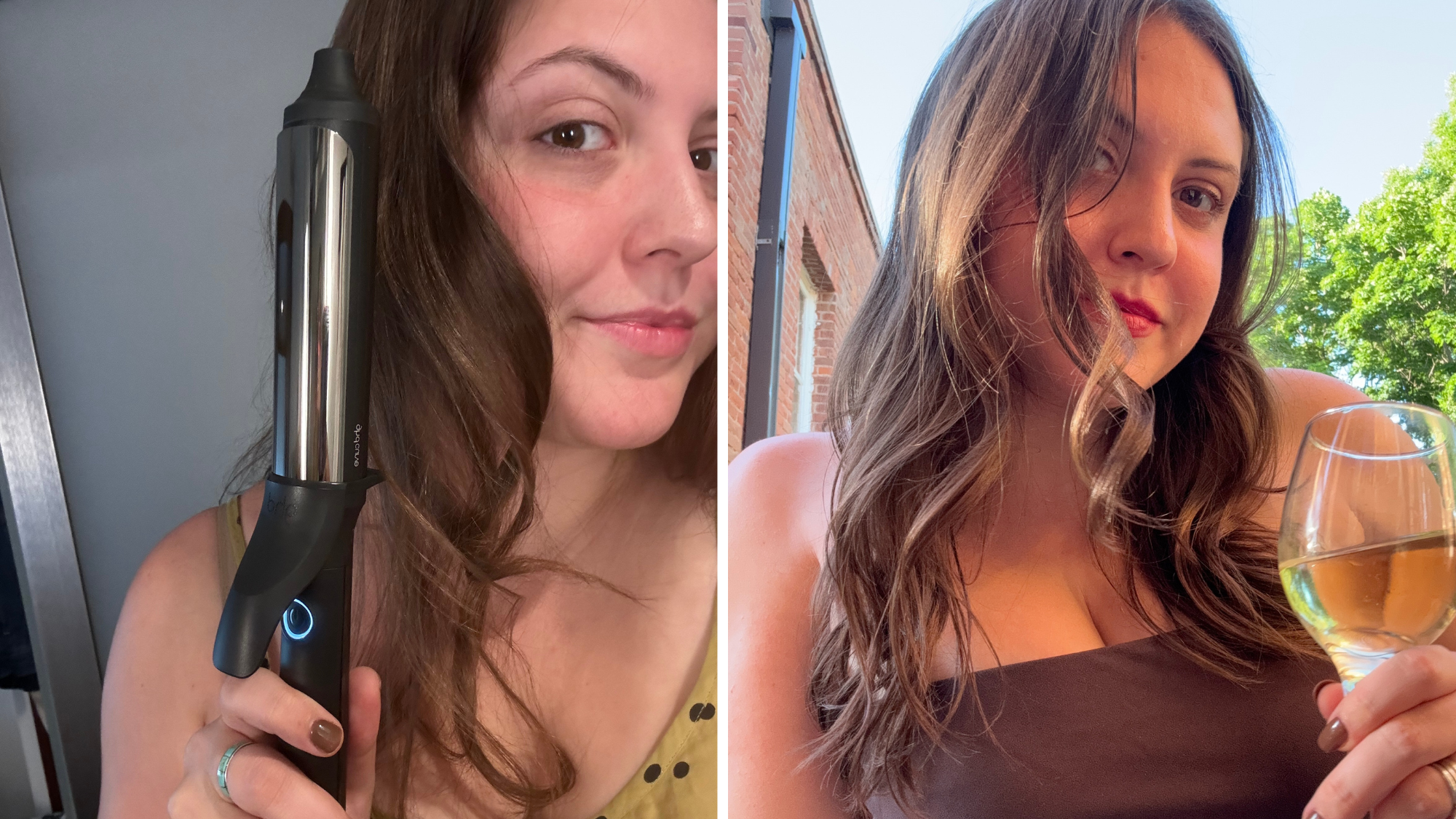
Sophia Vilensky uses the GHD Soft Curl for a pretty, shiny beach wave.
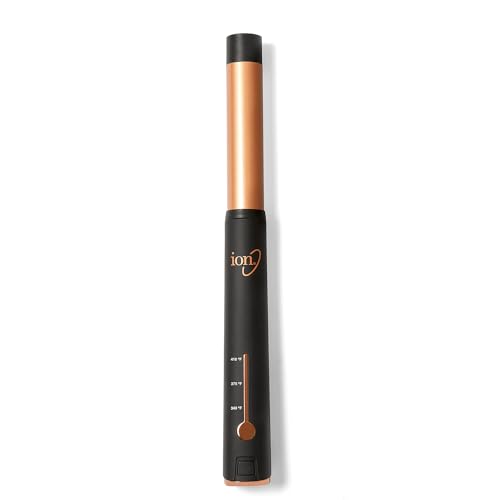
While high quality curling irons are typically a bit pricier, under $100 options do exist. One of the best is this IonLuxe option, which is very conveniently sold on Amazon. It’s clamp-less and cordless, which means it’s ideal for curling iron beginners. You don’t have to worry about creasing or how to maneuver a clamp—just wrap a chunk of hair around the barrel, hold it for roughly 10 seconds, and release. Just a note: You will have to charge this for two and half hours to get 35 minutes of cordless use.
What We Love: The cordless design makes this great for travel or on-the-go touch ups; it has three heat settings
What We Don’t: While 365 is a great temperature preset, this tool does not allow you to customize the temperature; there’s no resting bar, so it will burn your counter if you dont put down a towel or heat pad
Material: Ceramic and Tourmaline
Temperature Range: 340 to 410
Barrel Size: 1-inch
Who It’s Good For: Ideal for beginners, this is incredibly easy to use thanks to the wand-style construction. Since the bar is boosted with tourmaline, which emits negative ions, this is also a great option for curly hair. It will lock in moisture and boost shine as it works.
Our Review: “I’m hopeless with traditional curling irons—no matter how much I try, I get tangled in the cord and I can never get the technique right with the clamp. This curling wand, however, fixes all of my styling shortcomings. I love how I can go play around with my hand movements with its cordless design. Each charge lasts for 30 minutes, which is just what I need to curl my whole head. It’s also incredibly travel friendly thanks to its heatproof case. I only wish that the barrel was a tad bit bigger for my long hair. However, I’m still able to achieve long-lasting waves by wrapping my hair tighter around the barrel and heating it for just a few seconds.” — Brooke Knappenberger, Associate E-Commerce Editor

Brooke Knappenberger achieves a full-bodied curling iron curl without a clamp.
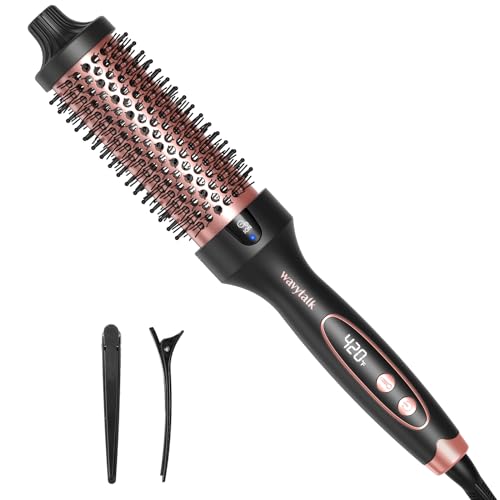
Standard curling irons are amazing. A classic! The OG! But we’d remiss not to call out some of the other, curl-creating hot tools that have disrupted the market in recent years. One such product is the WavyTalk Thermal Brush, which has viral status (it has over 170 million views on TikTok) for good reason. The heated bristles aid in quickly wrapping hair around the tool quickly and securely. The barrel itself is a ceramic tourmaline composition with negative ion technology, which essentially means it’s able to boost shine, seal the hair cuticle, and reduce frizz.
What We Love: Five temperature settings; endless styling options; very intuitive to use and beginner friendly—it’s just like brushing out your hair; affordable
What We Don’t: It really only allows for a standard curl—there’s more versatility with a traditional curling iron
Material: Tourmaline
Temperature Range: 330 to 420
Barrel Size: 1.5-inch
Who It’s Good For: This is suitable for all types of hair, just make sure the thicker or coarser your hair, the higher the temperature setting you select.
Our Review: “I’ve been seeing this hot brush on my For You Page for months and have been dying to get my hands on it. I’m naturally skeptical of viral TikTok products because very rarely do they live up to the hype. But let me just say: This exceeded my expectations. I had the most success brushing a chunk of hair like normal and then rolling the heated tool back up towards my root. I’d hold it there for roughly 10 seconds and then use a twist-and-pull motion to create a beachy, bouncy wave. It leaves my hair incredibly shiny.” — Samantha Holender, Beauty Editor
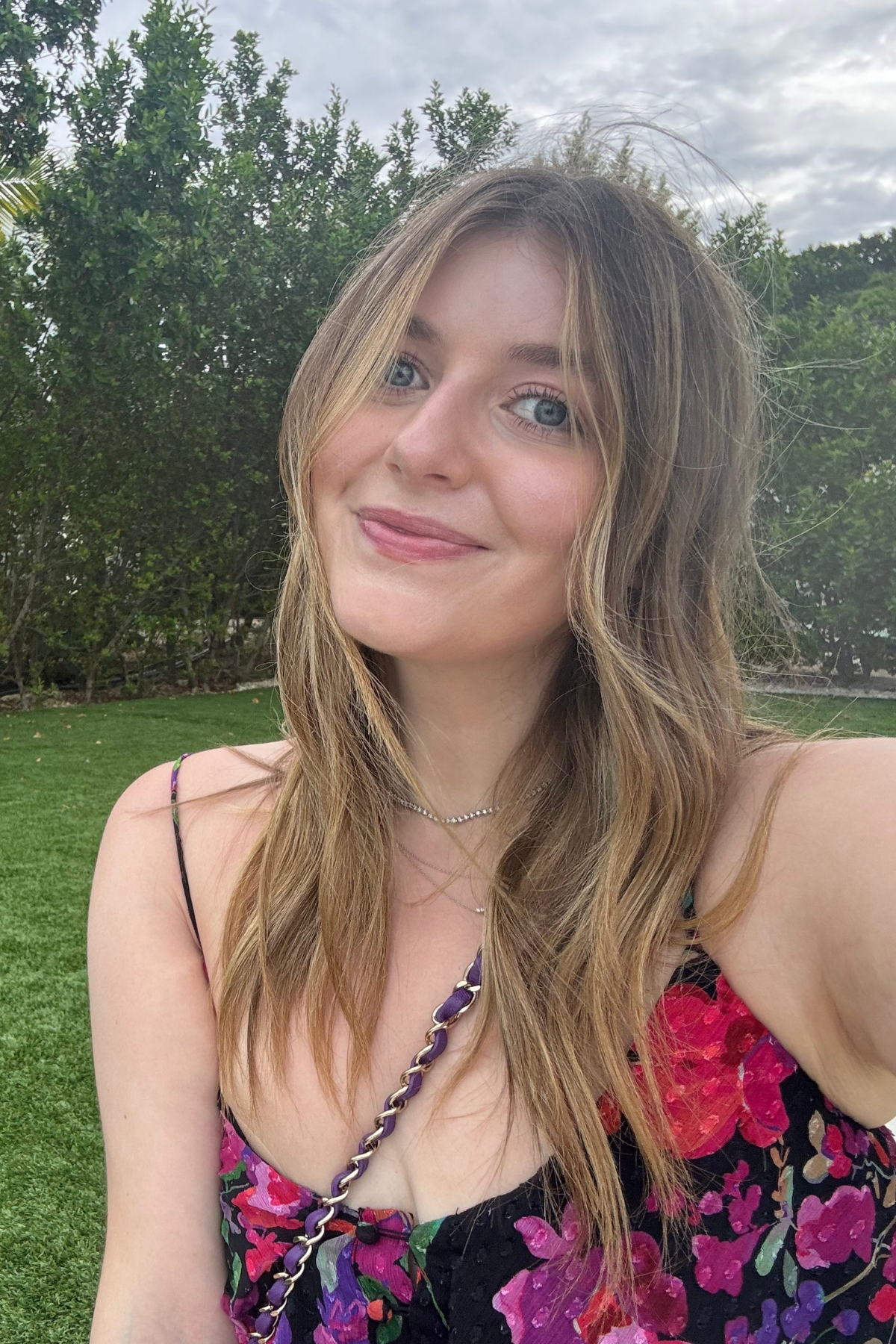
Samantha Holender packed this brush with her for a recent vacation, and loved how lightweight it was to travel with.
Other Curling Irons We Love
While we did not personally test the options below for this story, all of the below are highly rated and respected within the beauty industry. Our editors have either used these hot tools in the past or have been recommended them by a celebrity hairstylist. They have majority five-star reviews across various retailers as well.
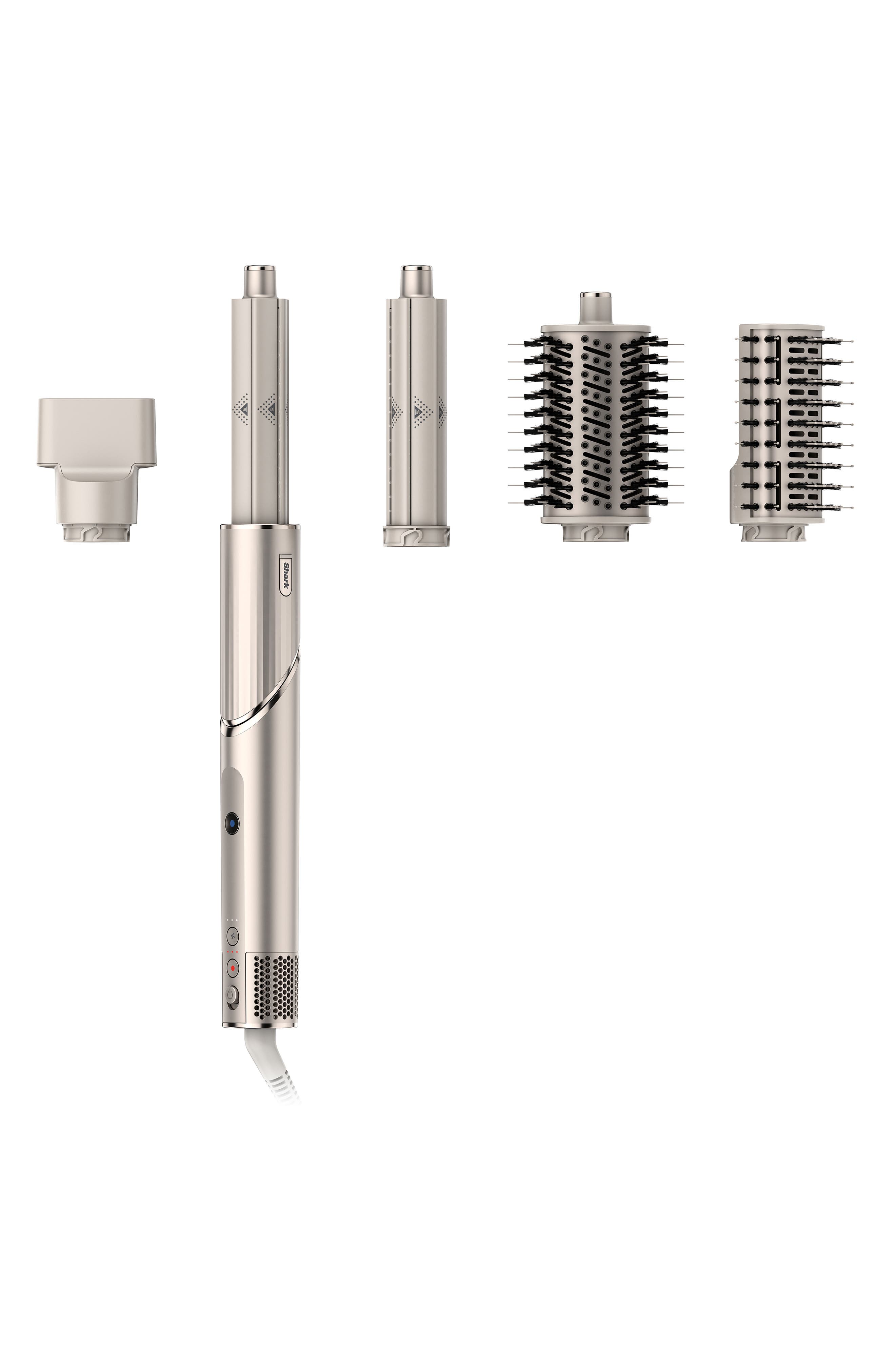
When this first came out in 2022, it was dubbed the Dyson dupe. But in the time since, the Shark FlexStyle has adopted its very own (stellar) reputation. At a more reasonable price point and with a lightweight feel, the five-attachment tool is an effective multi-styler. As this is a curling iron roundup, we're here to discuss the two Auto Wrap attachments. Both have 1.25-inch barrel size, however they direct airflow in different directions. That in mind, you’ll want to swap them out when working on the left side of your hair versus the right.
What We Love: The brand recently came out with new colorways; it’s lightweight; the price point is more affordable than comparable multi-stylers; there are three temperature settings
What We Don’t: The Auto Wraps need to be swapped out to change the direction of AirFlow, which can be a hassle; the brand has yet to come out with longer editions of the Auto Wrap for lengthier hair
Material: Metal
Temperature Range: 131 to 203
Barrel Size: 1.25-inch
Who It’s Good For: Like most multi-stylers, this a very beginner friendly hair tool. It’s ideal for someone who is trying to preserve the health of their hair, as the temperature stays much lower than traditional curling irons and won’t lead to heat damage. That in mind, if your hair struggles to hold a curl, you most likely won’t have huge success here.
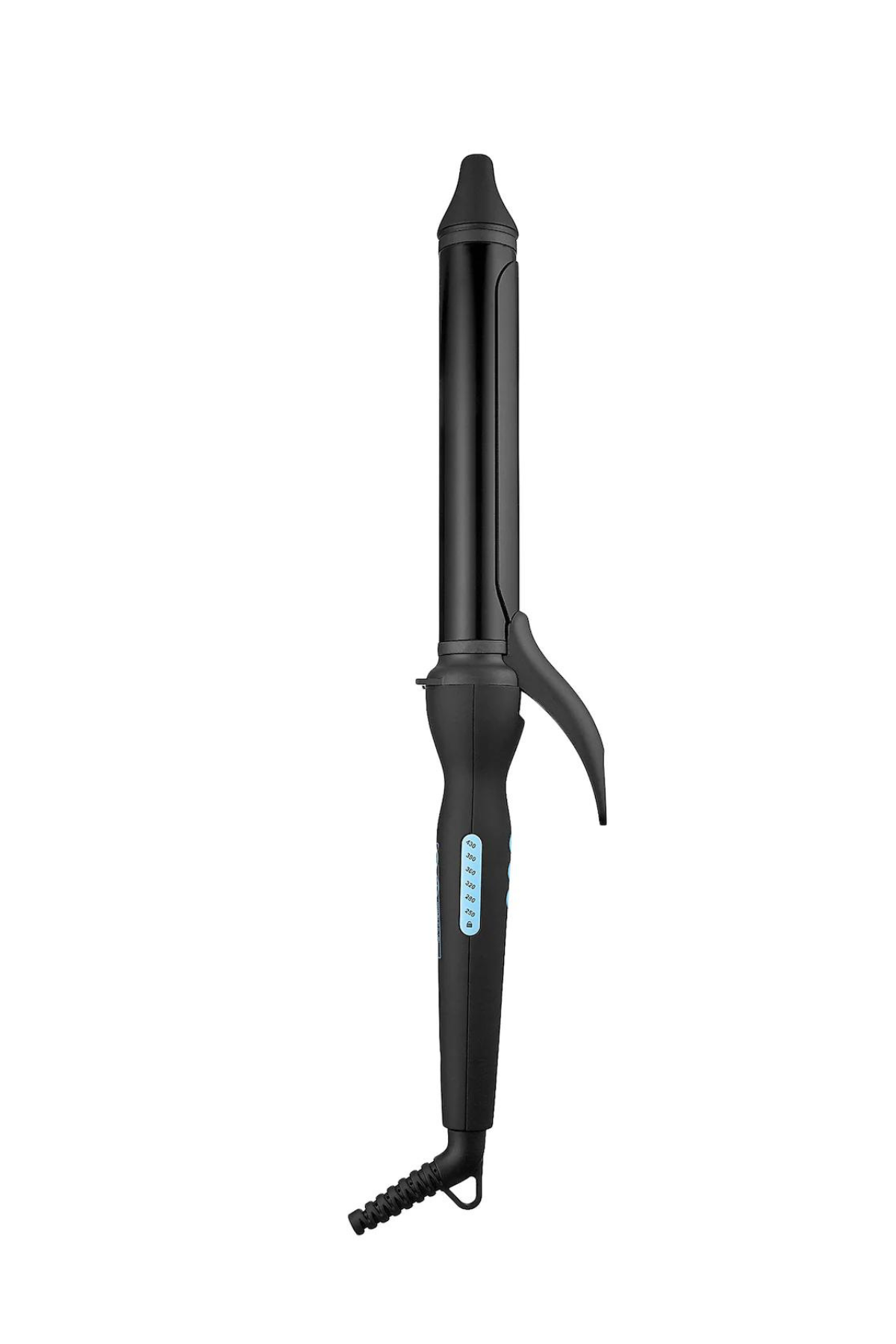
Curling long hair is an event. It can take over an hour to ensure every piece is swirled to perfection from top to bottom. To streamline your styling process though, you’re best off looking for an extra long barrel. The few additional inches give you enough space to get the entire chunk of hair in one fell swoop, effectively creating a uniform curl without kinks or ridges. That’s exactly what this Bio Ionic iron promises. You’ll be able to create loose waves and soft curls in just a single pass.
What We Love: The brand developed technology that’s able to lock moisture into the hair; multiple six temperature settings; one year warranty; two-inch longer barrel than standard size
What We Don’t: Reviewers say that curls don’t last long
Material: Ceramic
Temperature Range: 250 to 430
Barrel Size: 1.25-inch
Who It’s Good For: If you have drier hair, this is ideal as it actually locks moisture into the hair cuticle rather than drying it out. You may also want this if you have longer hair, as the elongated barrel makes it easier to curl the entire strand.

This little guy is TikTok viral for a good reason—you don’t have to be a pro to use it. All you have do to is take a small section of hair, clamp the iron at the bottom, and press the power button. Then, the iron takes over, rotating up against the strand. Hold it at the top for a few seconds, release the clamp, and voilá, you have a perfect curl. You can leave it as is or brush it out for a more laid back vibe.
What We Love: Customizable temperature; one year warranty
What We Don’t: Temperature goes too high—you don’t need to use 510 degrees on your hair; hair sometimes gets tangled
Material: Ceramic
Temperature Range: 290 to 510
Barrel Size: 1-inch
Who It’s Good For: Beachwaver is better suited for those with shorter or thinner hair. The clamp is not very long and doesn’t do a great job of securing thick or super-long strands.
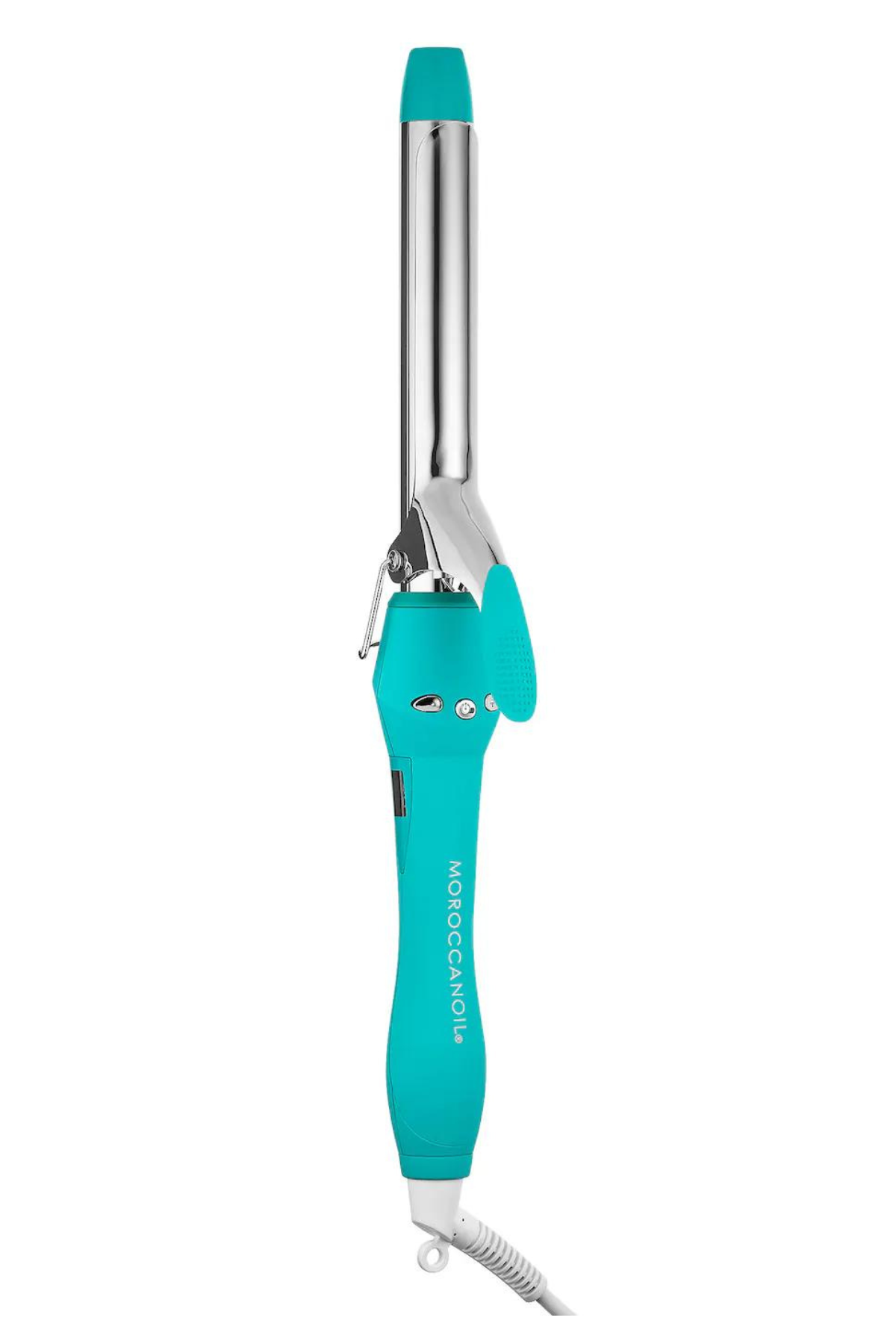
There’s no need to straighten frizzy hair before grabbing this iron. It’ll quickly remove frizz and give every spiral a smooth, polished look. It's made with a titanium, extra-long rod to evenly distribute heat through the length and density of the hair, while simultaneously knocking out majority of frizz. The duration of time you need to keep each strand clamped will differ person to person, but it will probably be a bit longer than normal. If you normally hold the curling iron for eight seconds, try 15 seconds with this guy.
What We Love: Customizable temperature settings; soft touch grip on the handle that makes the curling process comfortable; curls last a long time
What We Don’t: This barrel will feel too cumbersome for short hair
Material: Titanium
Temperature Range: Up to 430
Barrel Size: 1-inch
Who It’s Good For: Because of the fast-heating, highly efficacious titanium barrel and extra-long design, this is great for longer, thicker hair.
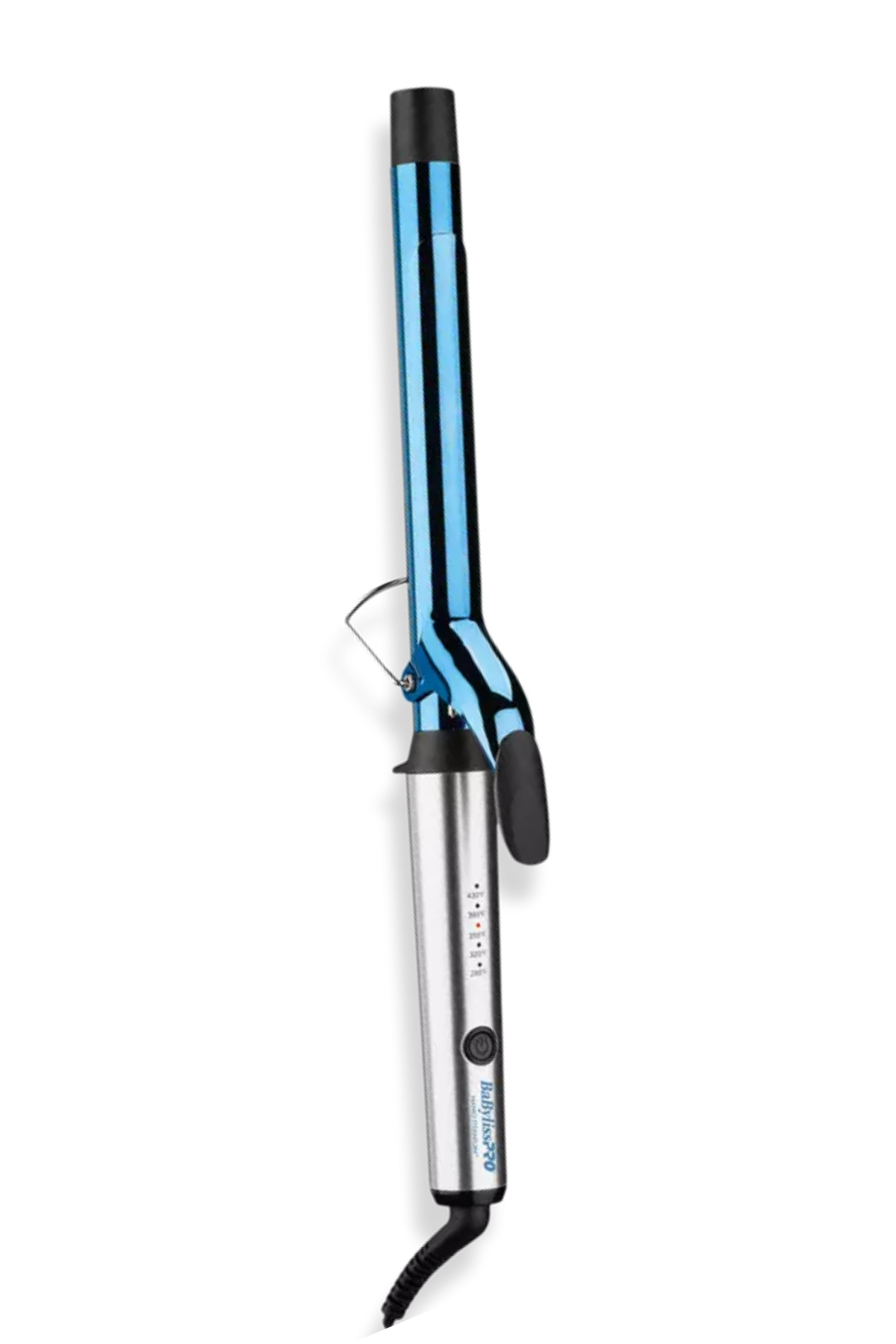
You’re well aware that curling your whole head can double as an arm workout. That in mind, this ridiculously lightweight design is game-changing. The slim curling iron feels like a feather (well, not really but you get the point) in your hand and the spring clamp makes it super easy to maneuver. Plus, it has a compact size that can be great for travel—or adding curls to bobs, lobs, or other short hairstyles.
What We Love: Great for travel; lightweight feel; works for short hair; gets very hot
What We Don’t: While it can be great to travel with, it is challenging to twirl down a long strand of hair due to size
Material: Titanium
Temperature Range: 320 to 395
Barrel Size: 1-inch
Who It’s Good For: It’s great for those with shorter hairstyles or anyone who finds a longer barrel difficult to use. This is also a titanium design, so it’s ideal for people who struggle to get long-lasting results.
What to Look For in a Curling Iron
- Barrel
“The smaller the barrel the tighter the curl,” says Rubenstein. A one-inch iron, according to Josh, will create tighter curls, while a two-inch barrel will give you more of a wavy style. Just a word from the wise: If your hair isn’t great at holding a curl, go tighter…it’s going to drop throughout the day.
- Heat
As a rule of thumb, the lower the heat is, the less damage you will have. But, it’s impossible to say that 350 degrees is the ideal temperature across the board. “If you have frizzy, thick, or coarse hair you will need a higher heat,” explains Rubenstein. “If you can do a curl or wave in one pass you can raise the heat—I believe this causes less mechanical damage. If you have to do multiple passes to the same section to get the result, you want to lower the heat.”
If you don't want to put heat on your hair, try one of the best overnight heatless curls tools.
- Clamp
There are three main types of curling irons: A marcel curling iron, a spring curling iron, and a curling wand—all of which create different types of curls. “Marcel and spring clamps will create more traditional, tighter curls,” says Josh. A wand, on the other hand? “It gives more of a beachy undone wave,” says Rubenstein.
- Material
Most curling irons will either be made of tourmaline or ceramic. "Tourmaline curling irons are coated with or infused with tourmaline, a gemstone that emits negative ions and infrared heat. This helps reduce frizz and static, resulting in shinier, smoother curls and is particularly effective for thick or coarse hair," explains Cavalcante. "Ceramic curling irons feature ceramic plates or barrels that provide even heat distribution, minimizing damage and creating consistent curls. They help smooth the hair cuticle, enhancing shine and reducing frizz, making them suitable for fine to normal hair types."
How Do You Curl Hair?
The size of your barrel and the temperature obviously play a role in your final curl, but technique is an important part of the equation. How you twist your hair, how long you hold it, and your positioning all impact the final outcome.
When using a curling iron with a clamp, there are two primary techniques. "One method is to place the ends of your hair into the clamp and then wrap the hair around the barrel by spinning the curling iron, usually with the iron placed upwards and the clamp facing the mirror. This method typically results in looser curls," explains Cavalcante. "The other method is to hold the clamp open downward, wrap the entire hair strand around the barrel like a ribbon around a pole, and then close the clamp. This technique creates more structured curls.
How you wrap the hair around the barrel will also factor into the shape of your curl. “If you tighten the hair from the top to the bottom, you’ll get a super springy curl, but if you just loosely wrap you’ll get more of a blown-out look,” explains Josh.
How to Make Curls Last
It's a tale as old as time. You curl your hair and looks great—only for it to completely fall a few hours later. Thankfully, a few easy styling tips will help you secure the shape so your curls can last all day.
"Allow curls to cool completely before touching them, which helps set the curl. For special occasions like weddings, you can wrap each curl around your finger and secure it with a clip immediately after curling, letting it rest and cool for 10 to 30 minutes," notes Cavalcante. You many also want to use a light-hold hairspray or setting spray after curling each section and avoid over-brushing to maintain curl definition.
How Do You Clean a Curling Iron?
It's highly possible you never once thought about cleaning your curling iron. But take it from Cavalcante: it's a very important step. "Curling irons should be cleaned from time to time to remove product buildup, especially if you use oils and hairspray on your hair before styling," he explains. All you have to do is wipe the barrel with a damp cloth every few weeks, depending on the frequency you use your curling iron. Just ensure the tool is off and completely cool before doing so.
Why Trust Us
The products on this list have all been vetted by Marie Claire's Beauty Editor, Samantha Holender (aka yours truly), and Marie Claire's Beauty Director, Hannah Baxter; hand-selected by a celebrity hairstylist; or tried and tested by one of our editors over the course of a few weeks. We have collectively tried over 25 curling irons during this process, selecting the 13 best.
Every curling iron that landed on this list offers multiple heat settings, is easy to use and safe, and is highly rated by reviewers. While the best curling iron for you will vary based on personal preference, you truly can't go wrong with one of the items on this list. For a more personalized recommendation or if you have any concerns, check with your hairstylist.
How We Tested
Our testing process merged long-time editor favorites with new discoveries. We asked the Marie Claire team to share which curling irons they use in their daily lives, and our team shared their love for the T3 Singlepass Curling Iron, Drybar The Mixologist Interchangeable Curling Iron, and the Pattern Beauty Curling Iron—among others. In addition, we called 10 curling irons for testing.
We evaluated each on ease of use, temperature settings, efficacy across hair textures, and hold throughout the day. We also assessed safety features, like an automatic turnoff and heat-protectant gloves. Our resulting pool comprised the 13 best curling irons on the market.
Meet the Experts

Clariss Rubenstein is a Los Angeles based hairstylist. Born in Paris, she discovered her passion for art and style at an early age. She attended the Vidal Sassoon Academy in Los Angeles and later worked under top stylists at the renowned Chris McMillan Salon. Her talent and ambition paid off and she opened a boutique studio, Gloss, in Beverly Hills, where she currently works. Clariss’s clients include Jennifer Garner, Dakota Fanning, Mindy Kaling, Kaley Cuoco, Leighton Meester, Allison Williams and Alison Brie.
Her work has been featured in editorials for Vanity Fair, Jalouse and LadyGunn. Her advertising work includes James Perse, Chanel, Louis Vuitton and Tommy Hilfiger.
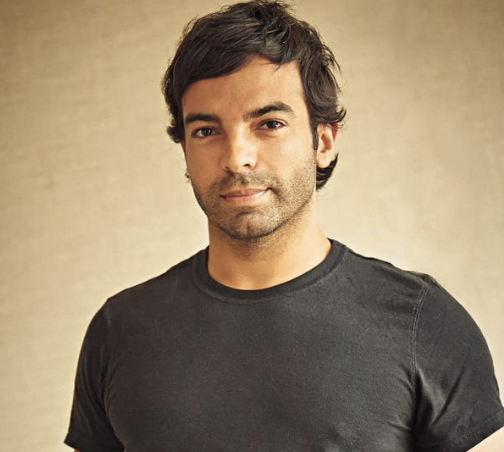
Harry Josh grew up in Vancouver. He had the desire to work in the fashion world at the age of 15. He started flipping through pages of Vogue. He began his hairstyling training while in Canada and eventually moved to New York City to pursue a more meaningful career. Harry Josh started working at a casting agency coloring models' hair in his apartment's bathroom in the West Village. Amy Astley, former beauty director of Vogue Magzine , was referred to Josh. Astley approved of his work and he became and editor for the magazine. Since then, he has helped style the hair of Rose Byrne, Jennifer Garner, Gwyneth Paltrow, Amanda Seyfried, Tina Fey, Mary-Kate and Ashley Olsen, Christy Turlington, and Helena Christensen. He has worked with photographers among the likes of Patrick Demarchelier, Annie Leibovitz, Carter Smith, Nino Munoz, Miles Aldridge, Stephane Sednoui, Gilles Bensimon, and Walter Chin. In 2013, Harry Josh partnered with DermStore to launch his hair tool line: Harry Josh Pro Tools. The line consists of two hair dryers, two curling irons, a flat iron, a diffuser, and an array of brushes, combs and clips.
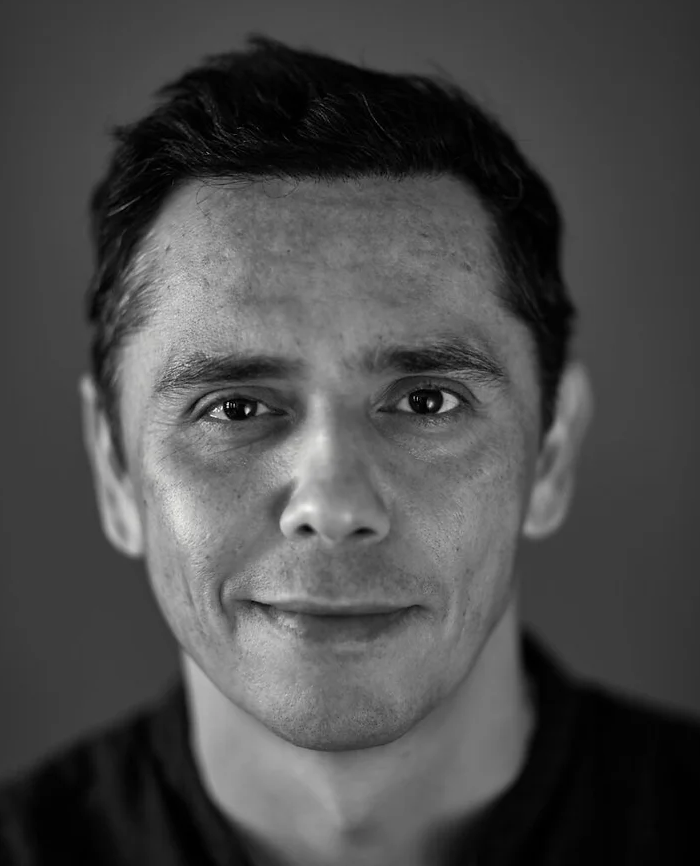
The Second Floor Salon was founded by Rogerio Cavalcante, an experienced hairstylist who moved to the U.S from Brazil 15 years ago and has built a clientele in NYC through his top quality service and customer service. The culture of beauty and innovation has been deep-rooted in Rogerio’s life for as long as he can remember. Since his childhood, Rogerio was surrounded by hairstylist influences in his family, with over nineteen family members working in the hair industry. Rogerio collaborated and learned alongside leaders of educational institutions including Toni & Guy, Vidal Sassoon, and L’Oréal Paris. Today he spends time traveling between New York, London, Paris, and Miami, attending to his global clientele, exchanging innovative techniques with other experts and continually pushing his style to incorporate the latest worldwide trends while perfecting his own unique skills in the Dry Cutting method.
Get exclusive access to fashion and beauty trends, hot-off-the-press celebrity news, and more.

Samantha Holender is the Senior Beauty Editor at Marie Claire, where she reports on the best new launches, dives into the science behind skincare, and shares the breakdown on the latest and greatest trends in the beauty space. She's studied up on every ingredient you'll find on INCI list and is constantly in search of the world's glowiest makeup products. She's constantly tracking the biggest nail and hair trends to pop up in the beauty space, going backstage during fashion weeks, tracking celebrity looks, and constantly talking to celebrity hair stylists, nail artists, and makeup artists. Prior to joining the team, she worked as Us Weekly’s Beauty and Style Editor, where she stayed on the pulse of pop culture and broke down celebrity beauty routines, hair transformations, and red carpet looks. Her words have also appeared on Popsugar, Makeup.com, Skincare.com, Delish.com, and Philadelphia Wedding. Samantha also serves as a board member for the American Society of Magazine Editors (ASME). She first joined the organization in 2018, when she worked as an editorial intern at Food Network Magazine and Pioneer Woman Magazine. Samantha has a degree in Journalism and Mass Communications from The George Washington University’s School of Media and Public Affairs. While at GWU, she was a founding member of the school’s HerCampus chapter and served as its President for four years. When she’s not deep in the beauty closet or swatching eyeshadows, you can find her obsessing over Real Housewives and all things Bravo. Keep up with her on Instagram @samholender.